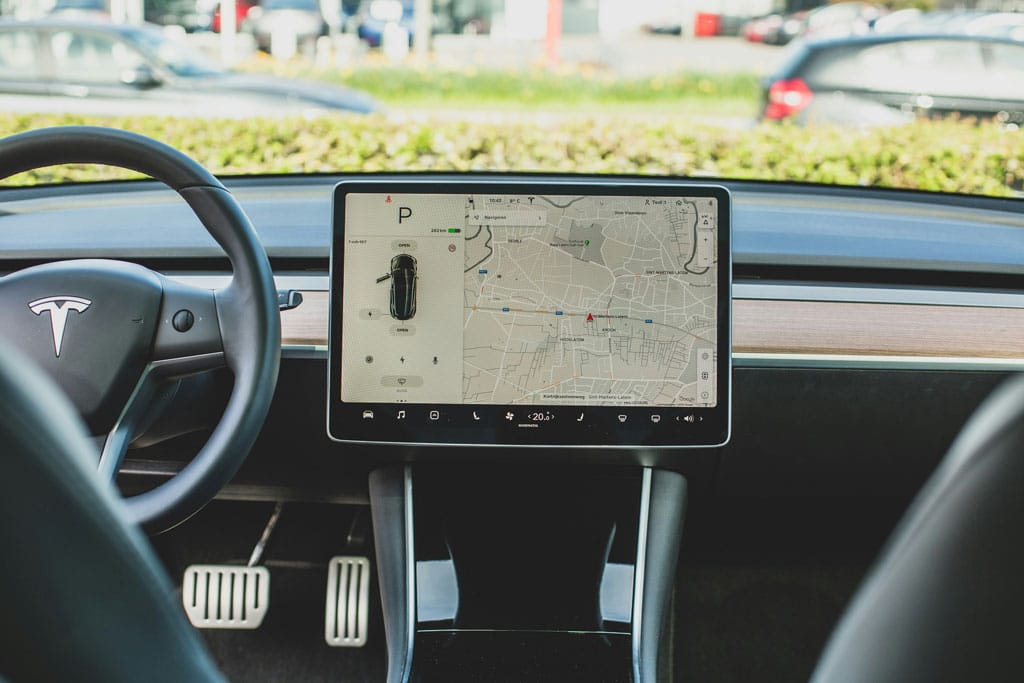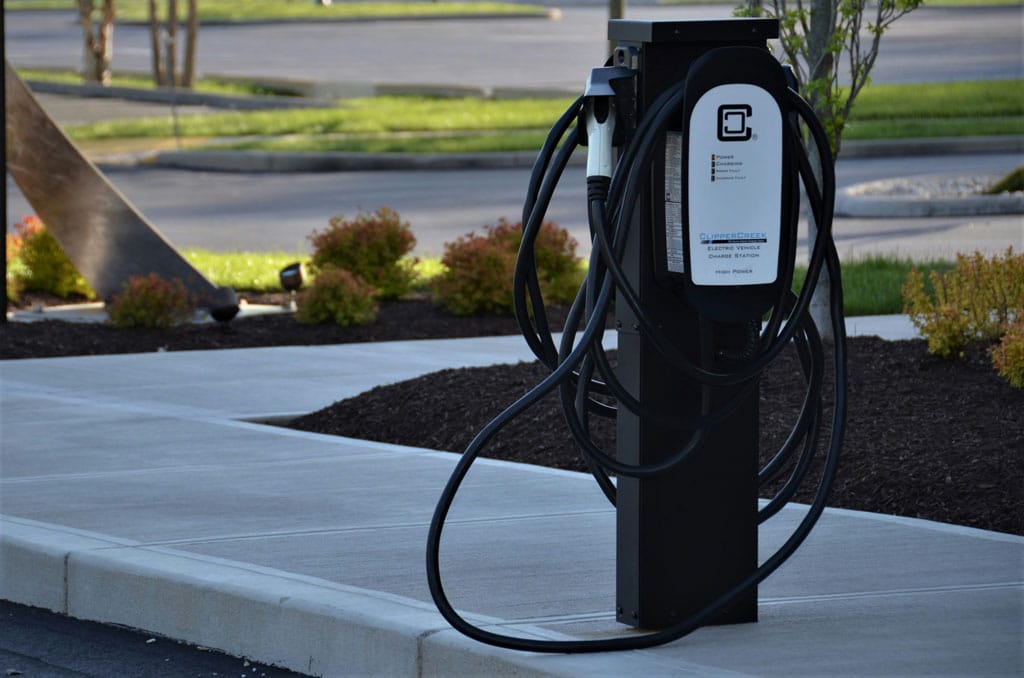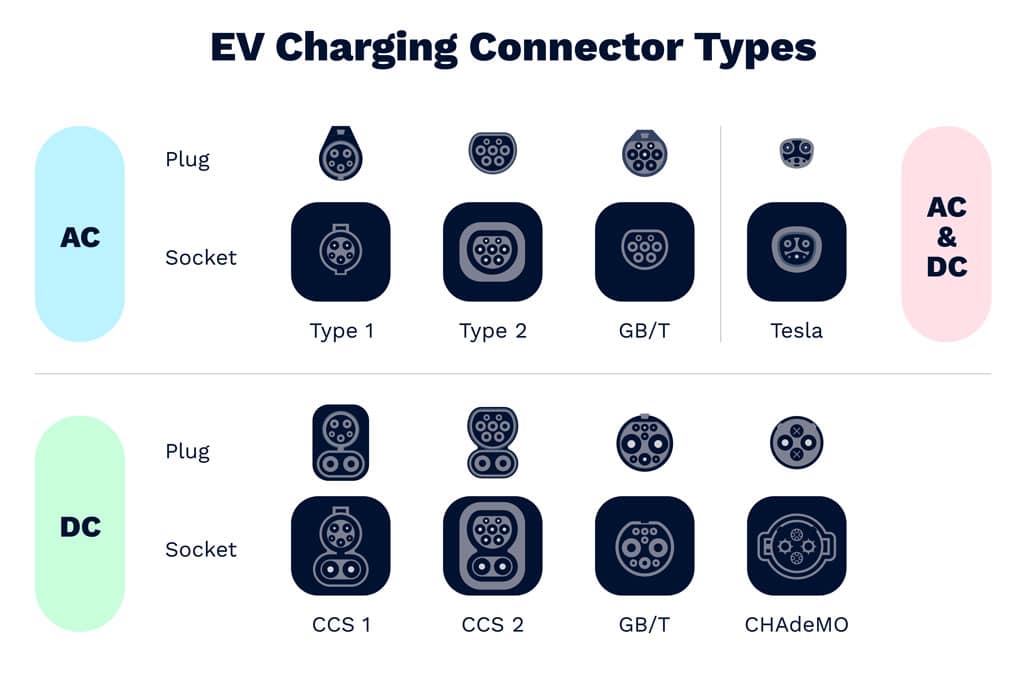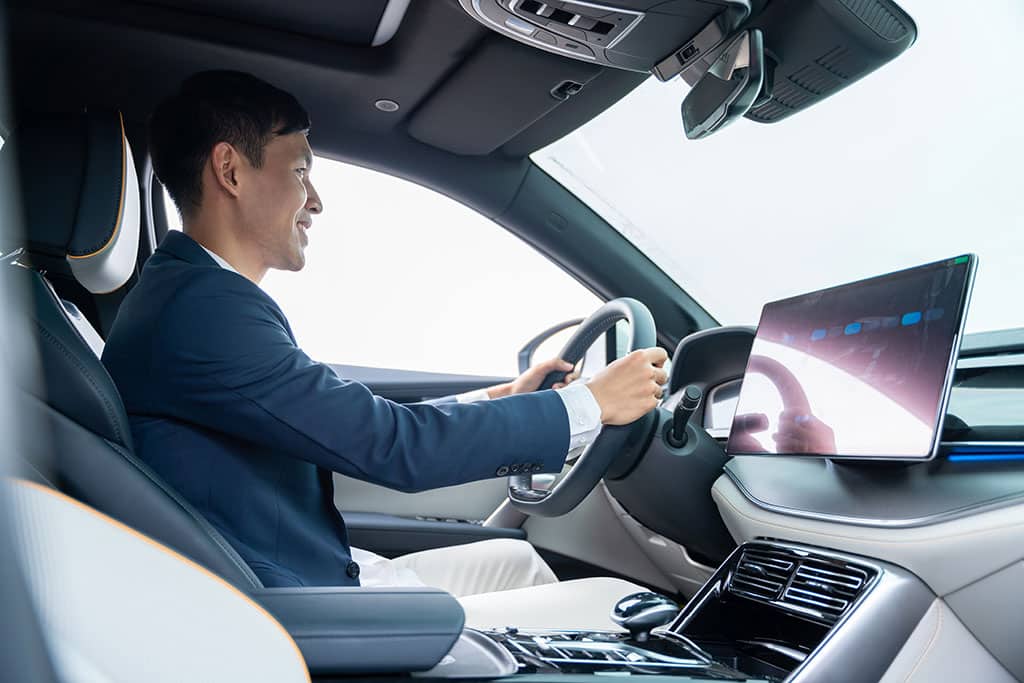How to take a road trip in an electric car
5 steps to ensure that you have the perfect EV road trip
Are you thinking about planning a road trip in an electric vehicle (EV) but feeling squeamish about the logistics of it all?
As we approach the Labor Day weekend – or the “unofficial end of summer” – many people use this time to take one last summer road trip. With an EV, it’s going to look different from your traditional long car journey, but it’s completely doable.
You probably have lots of questions: What if we run out of charge in the middle of nowhere? Are there things I can do to preserve the battery? How do I know when to stop to recharge? And how much is it going to cost me?
These are all excellent questions that we’ll answer for you in this article. That way, you can hit the road for your last adventure of the season with confidence.
Step 1: Plan, plan and plan some more.
The most important part of taking a long trip with an EV is to plan.
But mapping out your EV road trip is about more than just finding charging stations along the way. Before you even plan your route, you need to consider the following:

Your vehicle’s range – EV range varies tremendously, and the range is increasing with new technology. The median range of EVs is roughly 250 miles, according to the Department of Energy. Common vehicles you see on the road such as Tesla Model Ys can exceed 300+ miles on one charge.
Maximum ranges, however, can be as low as under 150 miles to more than 350 miles. But this is the expected range. An EV’s actual range will depend on several factors.
The weather forecast on your travel days – One main contributor to your EV’s range performance is the outside temperature. Driving in mild temperatures is best to preserve the charge. In extreme cold or heat, the battery will drain faster. By how much varies by model.
Recurrent, a company that tracks EV battery life, published a study that found some EVs lose just 3% of their driving range in freezing temperatures. Others see driving range drop by as much as a third. On the extreme heat side, Recurrent found battery range decreases by an average of 5% at 90 degrees and 31% at 100 degrees.
If you have no control over the time of year you’re traveling, there are other things you can do to help save the battery charge.
Terrain along the route – Terrain also affects range by changing the energy demands on the battery. But this isn’t all that different than a vehicle’s non-electric counterpart. More fuel is used when going uphill, for example, in a gas-powered car and the same is true for an EV.
But with EVs, there’s a silver lining. Difficult terrains that require more power to navigate (like inclines) will decrease the range while easier terrains either won’t impact the range or may even increase it. That’s because some of the energy used to go uphill is returned when going downhill through regenerative braking, depending on the battery’s state of charge (SoC).
Definition
Regenerative braking is when an EV reclaims energy when decelerating, using regenerative braking to recharge the battery. Think of it as putting energy back into the battery every time you brake.
Definition
State of charge (SoC) is a key metric for EVs that measures the percentage of energy stored in the battery relative to its full capacity. It's like a fuel gauge in an internal combustion engine (ICE) and directly affects the vehicle's range and performance.
How many passengers and luggage you’ll be taking – As with a gas-powered vehicle, weight affects gas mileage the same way it impacts range expectations in an EV. Extra weight in the car causes it to require more energy to move itself around.
Avoid including items that aren’t essential for your trip. Doing so will lighten your load and help you improve the distance your car travels on a full charge. Here are some examples of how weight impacts range.
| Vehicle | Cargo Description | Range Impact | Source |
|---|---|---|---|
| Rivian R1T | Towing: "a heavy trailer" | 50% reduction | Kelley Blue Book |
| Ford F-150 Lightning Platinum | Towing: 3,140 lbs; 5,260 lbs; 7,218 lbs | 62%; 67%; 70% reductions | Kelley Blue Book |
| Rivian R1T | Hauling: ~1,250 lbs | 13% reduction | YouTube: EV Buyers Guide |
| Ford F-150 Lightning | Hauling: ~1,250 lbs | 14% reduction | YouTube: EV Buyers Guide |
As we will discuss later, all these factors affect how often and where you are going to need to stop to charge up.
Step 2: Route plan with help from your car.
Some EVs have a built-in trip planner to help you plan your route and charging stops. Specific features vary by manufacturer, but all EVs have ways to help you find chargers on the go, see charger availability, and plan routes to destinations to optimize range while finding the most convenient chargers.

Since Tesla is currently the most common EV on the market and often a rental car, we’ll focus on their system. Tesla vehicles have a built-in Trip Planner that you can use before you go on your trip and/or when you’re already on the road. Planning ahead gives you the advantage of finding food, hotels, and other desired stops near chargers.
When you enter your destination, the navigation will find the fastest route, as well as the most convenient locations to charge along the way, highlighting Superchargers and Destination chargers. Trip Planner factors in driving style, elevation, outside temperature, traffic, stall availability and more when choosing a station. It will show you the number of open stalls, status updates and maximum charge rate available.
Definition
Tesla Supercharger is an EV fast charging network built and run by Tesla. This rapid public charging network, with speeds of up to 250kW DC possible, is mostly for Tesla vehicles.
Definition
Destination Charging locations are conveniently found at hotels, restaurants and shopping centers across the country. This type of station offers Level 2 EV chargers, which are slower and better suited for charging during an overnight stay or a couple of hours away from your vehicle while dining. Tesla destination chargers are free to use by all Tesla drivers who are customers of the destinations where the stations are located.
If you don’t drive a Tesla, don’t worry. There are public charging stations that you can find using several different apps. Electrify America, one of the largest networks of EV charging stations, is set up in many states and continues to expand. The ChargePoint or PlugShare apps also guide you to chargers all over the country. You can also find chargers on navigation apps like Google Maps and Waze.
Regardless of the app or tool you use to plan your trip, couple your pit stops with other activities. Choose charging stations that have adjacent restaurants, grocery stores, shopping malls or restrooms to maximize your time.
One of the trip planning apps we recommend is A Better Routeplanner. It works with multiple EVs and provides a full trip plan including charge stops and trip duration. While driving, you can use it to plan in real-time and continuously get updated information about your trip.
Have a backup charge plan.
First, make sure you have enough of a buffer between charging stops. Keep at least a 10% charge on your vehicle to account for any unexpected delays or detours, such as changes in the weather, traffic or accidents blocking your route.
You may arrive at the charging station and find that it’s fully occupied. Or maybe the station or individual ports are completely inoperable. In a study by Cool the Earth, a nonprofit dedicated to minimizing carbon emissions, only 72.5% of surveyed charging stations were operational. These scenarios do happen so it’s best to have a backup plan such as making sure there’s more than one charging station in the vicinity of your scheduled stop.
The good news is the federal government has put rules in place to help with these charging issues. The Federal Highway Administration set new national standards for federally funded EV chargers in February 2023 to help ensure drivers can easily find a charger, do not need multiple apps and/or accounts to charge, chargers work when drivers need them to, and are designed to be compatible with future charging capabilities.
The rule also establishes minimum technical standards for charging stations, including required number of charging ports, connector types, power level, availability, payment methods, uptime/reliability, EV charger infrastructure network connectivity, and interoperability, among other requirements.
Step 3: Charge up efficiently and effectively.
Per the U.S. Department of Energy, as of February 2024, there are more than 61,000 publicly accessible EV charging stations with Level 2 or DC Fast chargers in the U.S. Of that number, 2,234 are Tesla Supercharger stations. That’s an increase in EV chargers of roughly 110% since 2020.

Tesla’s Supercharger network offers such an advantage to its drivers that its competitors are looking to use their network as they expand their EV lineup.
These companies include Ford, General Motors, Volvo, Rivian, Mercedes-Benz, and Nissan. And, just like technology, these developments are ever-changing.
Types of Electric Vehicle Chargers
Level 1 & 2 chargers
Level 1 EV chargers normally come standard with the purchase of new EVs and PHEVs. They plug directly into common 120-volt wall outlets and do not require any installation.
However, you’re not going to find many of these on the road. That’s because, depending on your vehicle’s efficiency (or mpg-e), Level 1 chargers can only add about three to five miles of range to the vehicle’s battery per hour. Way too slow when you’re on the go.
The most common for public charging stations is a Level 2 charger. Level 2 equipment offers higher-rate AC charging through 240V (in residential applications) or 208V (in commercial applications) electrical service, and is common for home, workplace, and public charging. Level 2 chargers can charge a BEV to 80% from empty in 4-10 hours and a PHEV in 1-2 hours.
Pro Tip:
If your road trip includes one or more overnight stops, choose a hotel with a charging station on its property. Many hotels these days offer EV charging with a Level 2 charger to their guests free of charge while some require a fee. You can fully charge your vehicle while you catch up on your sleep. Keep in mind that, depending on the type of EV you're driving, you may need an adapter to plug in (for example, to plug a Tesla into a non-Tesla charger).
DC Fast Chargers
Direct current fast charging (DCFC) equipment offers rapid charging along heavy-traffic corridors at installed stations. DCFC equipment can charge a BEV to 80% in just 20 minutes to 1 hour with a typical power output of 50kW to 350 kW.
While Level 1 and Level 2 charging relies on an EV’s built-in onboard charger to convert alternating current (AC) to direct current (DC), DC fast charging manages this step prior to delivering the juice to your EV. For this reason, an EV’s DC fast charging or Tesla Supercharging speed isn’t impacted by its onboard charger.
However, an EV with a more powerful onboard charger will charge quicker on Level 2, assuming the charging station can deliver enough power to make a notable difference.
Tesla Superchargers
Superchargers are Tesla’s branding of a DC fast charger that offers up to 250kW charging rate. Superchargers can add up to 200 miles of range in just 15 minutes. In general, the larger and heavier Tesla models will take longer to charge up, but the difference is minimal at a Supercharger.
Pro Tip:
Don’t walk away from a Tesla supercharger while your vehicle is charging. It automatically shuts off when it’s done. If you leave it plugged in and it’s not charging, it could cost you an idle fee of up to $1 per minute! Tesla does give you a one-time freebie, though. If the vehicle is moved within five minutes, the fee is waived. Idle fees only apply when a Supercharger station is at 50% capacity or more.

| Level 1 | Level 2 | DC Fast Charging | |
|---|---|---|---|
| Connector Type2 | Type 1 / J1772 connector | Type 1 / J1772 connector | CCS connector |
| CHAdeMO connector | |||
| Tesla connector | |||
| Voltage3 | 120 V AC | 208 - 240 V AC | 400 V - 1000 V DC |
| Typical Power Output | 1 kW | 7 kW - 19 kW | 50 - 350 kW |
| Estimated PHEV Charge Time from Empty4 | 5 - 6 hours | 1 - 2 hours | N/A |
| Estimated BEV Charge Time from Empty5 | 40 - 50 hours | 4 - 10 hours | 20 minutes - 1 hour6 |
| Estimated Electric Range per Hour of Charging | 2 - 5 miles | 10 - 20 miles | 180 - 240 miles |
| Typical Locations | Home | Home, Workplace, and Public | Public |
The benefits of battery preconditioning
Battery preconditioning enhances the charging performance of a Tesla, making it up to 25% faster. On long journeys, it lets you hit the fastest charging speeds sooner, reducing the amount of time spent charging. It also helps protect the long-term health of the battery pack.
Here’s how it works. The battery has an ideal operating temperature – about 70 degrees – and will work less effectively if it’s too far from that point (up or down). The car’s battery management system (BMS) automatically controls the battery pack’s temperature.
Preconditioning happens when the car knows it’s going to be charged. It will deliberately heat or cool the battery to the ideal temperature so it can accept the fastest-possible charging speed as soon as possible after being plugged in. The car knows it’s about to be charged when you set the destination as one of the charging stations in the Tesla navigation system. The car will then automatically precondition the battery along the way.
While preconditioning isn’t required to charge your Tesla on a road trip, it does optimize the charge time. That way, you can get back on the road faster.
Most other EVs offer a preconditioning feature like Tesla, but it only works when the car is plugged into the charger. On a Ford, for example, preconditioning heats or cools the EV with electricity from the power grid, instead of from your vehicle’s battery. To precondition the vehicle, you set your departure time, plug your vehicle into your charger and the vehicle will start to precondition based on how much you want to charge and when you want to leave.
Scheduling a departure time in a Tesla is another way to use the preconditioning feature, just like with the Ford. In this case, the car knows when you’re planning to start your journey, so it prepares the battery pack and electrical components to make sure they’re at the ideal temperature when you leave. This is done through Tesla’s infotainment system using the ‘Schedule’ function. You can find this in the climate control menu and the charging menu.
Don’t fill it up
If your EV’s battery range is 350 miles, you expect to get that many miles on a full charge. But you won’t. That’s because an EV typically doesn’t get charged to 100%. To put less stress on the battery, car manufacturers often recommend charging 80% to 90% capacity. At a fast-charging station, you’ll tend to leave the car at only 80% charged.
There are good reasons for this charge limit: charging performance and battery longevity. The battery packs in an EV are typically lithium-ion. And charging to 100% can put the battery in a volatile state that negatively impacts the SoC or sets off a catastrophic failure (but these are very uncommon).
Battery pack degradation is much more likely. Consistently charging to 100% promotes the growth of lithium metal tendrils, known as dendrites, which can cause a short circuit. But more commonly, the lithium ions fall out of circulation when they get caught in side reactions within the electrolyte. It’s often due to the higher temperature generated from the energy stored when a battery is charged to its capacity.
While it’s not good to charge any EV from empty to full, you shouldn’t completely drain the battery either. Driving your EV until the battery is dead is not only bad for the battery; it also causes range anxiety and might get you stranded.
Charging costs vary greatly
Charging your EV at home is the most cost effective, but obviously, that’s not possible when you’re on the road. Most of the time, it’s going to cost you to recharge, but EVs still cost less to fuel than gas-powered cars.
Some EV charging stations are free. These are typically found at shopping centers and supermarkets, and you can use them to top off your vehicle while shopping. In addition, some automakers may offer free public charging at specific chargers. One example, as we discussed before, is the Tesla destination chargers.
The costs associated with public charging vary widely because there are different ways of calculating this expense. The following are some of the methods:
- Pay-as-you-go service
- Subscription-based
- Prices set by the charging networks
- Decided by the company that owns the property where the charging station is located
- The time it takes to charge your EV
- Per kilowatt-hour (kWh) used (the industry is moving toward broad adoption of this method)
As discussed above, some charging stations offer Level 2 or DC fast charging. The quicker the charging method, the higher the cost. DC fast charging is the quickest type available, so it’s the more expensive option of the two. Some Tesla Supercharger locations offer on-peak and off-peak rates.
Though Tesla owners can see prices at nearby Superchargers through the app, there’s no way to track pricing on a larger scale. However, GadgetMates reported prices of $0.25 to $0.35 per kWh were common as of March 2024.
The costs vary based on location as well. According to U.S. News and World Report, in California, Level 2 charging costs about $0.30 cents per kWh. DC fast charging is roughly $0.40 cents per kWh. Using those rates, at a Level 2 charger it would cost about $13 to charge a Nissan Leaf with a 149-mile range and efficiency of 30 kWh per 100 miles from empty to full. Refueling the same Nissan using DC fast charging would cost about $18.
Pro Tip:
If you don’t mind camping, you can use provided RV hookups at campgrounds to charge your vehicle. If you rent a spot for an RV — typically $35 to $50 — you can get a full charge and a good night's rest without paying for a hotel.
Step 4: Drive efficiently to conserve battery
HOV Lanes: One way you can drive more efficiently to save the battery is to use the HOV lane.

Certain states allow EV drivers to use the HOV lanes, which saves power and gets you to your destination faster.
Check the rules of the states you’re traveling in on the U.S. Department of Energy website first. However, most states require registration, and you either get a decal or special license plate to show you’re permitted in the HOV lane.
Highway vs. city streets: Because of their regenerative braking systems, EVs are generally more efficient in stop-and-go traffic. And when you brake, use the one-pedal driving option instead of activating your friction brake. This enables you to take full advantage of the energy recouped by the regenerative braking.
Driving at highway speeds can reduce efficiency, so go a little below the speed limit if it’s safe. Many EVs achieve the best range at around 50 mph, but this may not be doable on the highway. Your other choice is to take the city roads that require lower speeds and lots of braking.
Adapt your driving: Just like in a gas-powered car, hard acceleration can reduce your battery energy faster than driving calmly. One way to do this is to use cruise control whenever possible. Keeping your vehicle at constant speed can improve efficiency.
Additionally, you can conserve your EV battery by keeping the AC or heat off or switching them to eco-mode. In the dead of summer, we know this isn’t possible. But what you can do is park in the shade when you stop to keep the temperature of the cabin, and the battery, cooler.
Step 5: Enjoy the ride!
It can be just as fun to road trip in an EV as it is in a gas-powered car. And as with any road trip, prioritize safety by keeping an eye on weather forecasts, being aware of hazardous conditions and having emergency supplies on hand.

Planning an EV road trip requires careful consideration and preparation. From planning your route and finding the best pit stops to locating suitable charging stations, each step is important to ensure a successful journey.
And remember, the trip is about more than just driving – embrace the experience and make the most of your EV road trip adventure! So, sit back and relax (if you’re the passenger) and see where the journey takes you.
Privacy Overview
| Cookie | Duration | Description |
|---|---|---|
| cookielawinfo-checbox-analytics | 11 months | This cookie is set by GDPR Cookie Consent plugin. The cookie is used to store the user consent for the cookies in the category "Analytics". |
| cookielawinfo-checbox-functional | 11 months | The cookie is set by GDPR cookie consent to record the user consent for the cookies in the category "Functional". |
| cookielawinfo-checbox-others | 11 months | This cookie is set by GDPR Cookie Consent plugin. The cookie is used to store the user consent for the cookies in the category "Other. |
| cookielawinfo-checkbox-necessary | 11 months | This cookie is set by GDPR Cookie Consent plugin. The cookies is used to store the user consent for the cookies in the category "Necessary". |
| cookielawinfo-checkbox-performance | 11 months | This cookie is set by GDPR Cookie Consent plugin. The cookie is used to store the user consent for the cookies in the category "Performance". |
| viewed_cookie_policy | 11 months | The cookie is set by the GDPR Cookie Consent plugin and is used to store whether or not user has consented to the use of cookies. It does not store any personal data. |